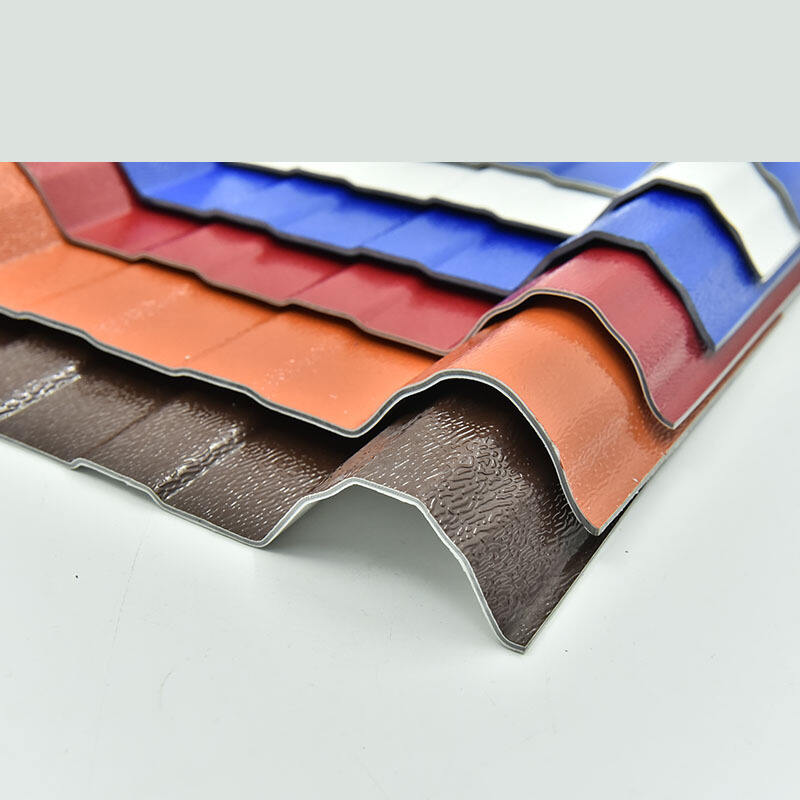The Differences Between UPVC Roof Tiles and ASA Roof Tiles
What Are UPVC and ASA Roof Tiles?
UPVC (Unplasticized Polyvinyl Chloride) is a type of plastic renowned for its high strength-to-weight ratio and environmental resistance, making it ideal for construction purposes. UPVC roof tiles exemplify these characteristics by being lightweight, highly durable, and easy to install. Their versatility extends to residential and commercial applications, offering a practical roofing solution that stands the test of time.
On the other hand, ASA (Acrylonitrile Styrene Acrylate) is another synthetic polymer celebrated for its exceptional weather resistance and sustainability. ASA roof tiles are engineered to endure extreme conditions, such as intense UV exposure and heavy rainfall, while maintaining their structural integrity. These tiles are not only high-performing but also aesthetically pleasing, making them a preferred choice for those seeking both durability and visual appeal in their roofing materials.
By understanding the attributes of both UPVC and ASA roof tiles, builders and homeowners can make informed decisions that align with their specific needs, ensuring that the chosen roofing solution offers longevity and performance.
Key Differences Between UPVC and ASA Roof Tiles
Material Composition
The material composition of UPVC and ASA roof tiles showcases significant differences. UPVC, or Unplasticized Polyvinyl Chloride, is primarily made from PVC combined with various additives like UV stabilizers and flame retardants. This blend results in roof tiles that are not only lightweight but also robust and resistant to environmental degradation. In contrast, ASA (Acrylonitrile Styrene Acrylate) is crafted from acrylonitrile, styrene, and acrylic elastomer. This unique composition lends ASA roof tiles superior resistance to thermal expansion and contraction, making them more resilient in fluctuating temperatures compared to their UPVC counterparts.
Durability and Weather Resistance
When it comes to durability and weather resistance, UPVC roof tiles have a typical lifespan ranging from 20 to 30 years. They effectively resist rot, rust, and pest infestations, though they might not withstand extreme weather conditions as effectively as ASA. On the other hand, ASA roof tiles boast a longer lifespan of up to 50 years due to their remarkable impact resistance and low water absorption rates. As such, ASA tiles are an excellent choice for regions that experience severe weather conditions, offering reliability and sustained performance over decades.
Aesthetic Options and Color Longevity
In terms of aesthetics, UPVC roof tiles are available in various colors and styles. However, they may experience color fading over time when exposed to prolonged UV radiation, despite improvements in production methods aiming to mitigate this issue. Conversely, ASA roof tiles excel in retaining their color integrity much longer than UPVC. Thanks to superior UV resistance, ASA roof tiles maintain vibrant colors and appealing designs, allowing homeowners and builders to enjoy enduring aesthetic value without frequent replacements.
Installation and Maintenance
Installation and maintenance are crucial aspects to consider when selecting roofing materials. UPVC roof tiles are generally easier to install due to their lightweight nature and interlocking capabilities, which can significantly reduce labor costs and installation time. In contrast, ASA roof tiles may require professional installation owing to their heavier weight and specific fitting needs. Nonetheless, ASA tiles are comparatively low-maintenance post-installation, necessitating only periodic cleaning to preserve their condition and appearance over time.
Applications of UPVC and ASA Roof Tiles
Residential and Commercial Uses
UPVC roof tiles are a popular choice for residential buildings due to their cost-effectiveness and ease of installation. These properties make UPVC roof tiles suitable for new homes and renovations, offering homeowners an affordable and practical roofing solution. The lightweight nature of UPVC tiles further simplifies installation, reducing labor costs and time. In contrast, ASA roof tiles are often utilized in both residential and commercial projects where higher durability and long-term performance are crucial. This includes buildings like schools, commercial complexes, and hospitals, where the focus is on withstanding various environmental conditions while ensuring enduring performance.
Specialized Projects
In specialized construction projects, UPVC roof tiles are selected for their affordability and minimal maintenance requirements, making them ideal for projects where roofs do not face extreme weather conditions. These tiles offer a cost-efficient solution that meets the needs of various specialized structures. On the other hand, ASA roof tiles are favored in environments such as green buildings and eco-friendly projects. ASA's sustainable attributes and energy efficiency align well with the goals of these projects, offering an eco-conscious roofing alternative that contributes to reduced environmental impact while maintaining excellent durability and weather resistance.
FAQ
What are the main differences between UPVC and ASA roof tiles?
UPVC tiles are made from Unplasticized Polyvinyl Chloride and are lightweight with environmental resistance properties, while ASA tiles are crafted from Acrylonitrile Styrene Acrylate, offering superior weather resistance and longevity.
Which roof tiles last longer, UPVC or ASA?
ASA roof tiles generally have a longer lifespan, up to 50 years, compared to UPVC tiles, which last between 20 to 30 years.
Are ASA roof tiles more expensive to install than UPVC tiles?
ASA roof tiles may require professional installation due to their heavier weight and specific fitting needs, which might increase installation costs compared to the easier-to-install UPVC tiles.
Can ASA roof tiles maintain their color better than UPVC tiles?
Yes, ASA roof tiles have superior UV resistance, allowing them to retain vibrant colors for longer periods, unlike UPVC tiles, which may experience color fading over time.
Installation Guide: How to Properly Install PVC Roof Tiles
ALLHow to Choose the Right PVC Roof Sheet for Your Building Project
NextRecommended Products
Hot News
-
How to choose the right roof tile
2024-01-24
-
PVC Plastic Tiles: The Ideal Roofing Material
2024-01-24
-
The Essentials of Synthetic Resin Tile Manufacturing
2024-01-24

 EN
EN
 AR
AR
 BG
BG
 HR
HR
 CS
CS
 DA
DA
 NL
NL
 FI
FI
 FR
FR
 DE
DE
 EL
EL
 HI
HI
 IT
IT
 JA
JA
 KO
KO
 NO
NO
 PL
PL
 PT
PT
 RO
RO
 RU
RU
 ES
ES
 TL
TL
 IW
IW
 ID
ID
 LT
LT
 VI
VI
 TH
TH
 TR
TR
 AF
AF
 MS
MS
 KM
KM
 LO
LO
 MY
MY


